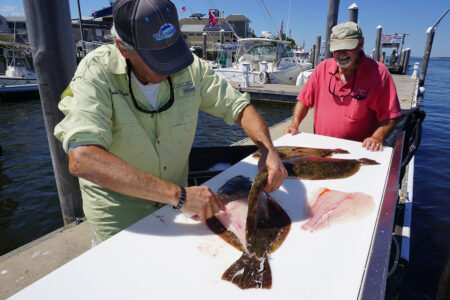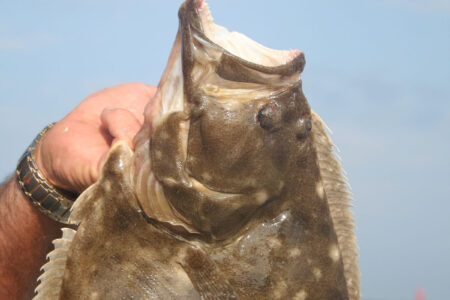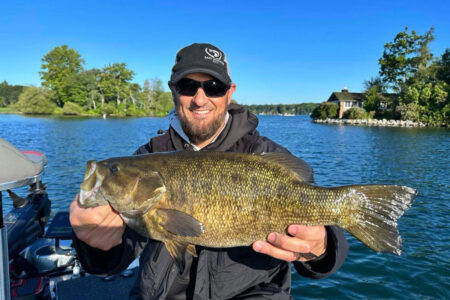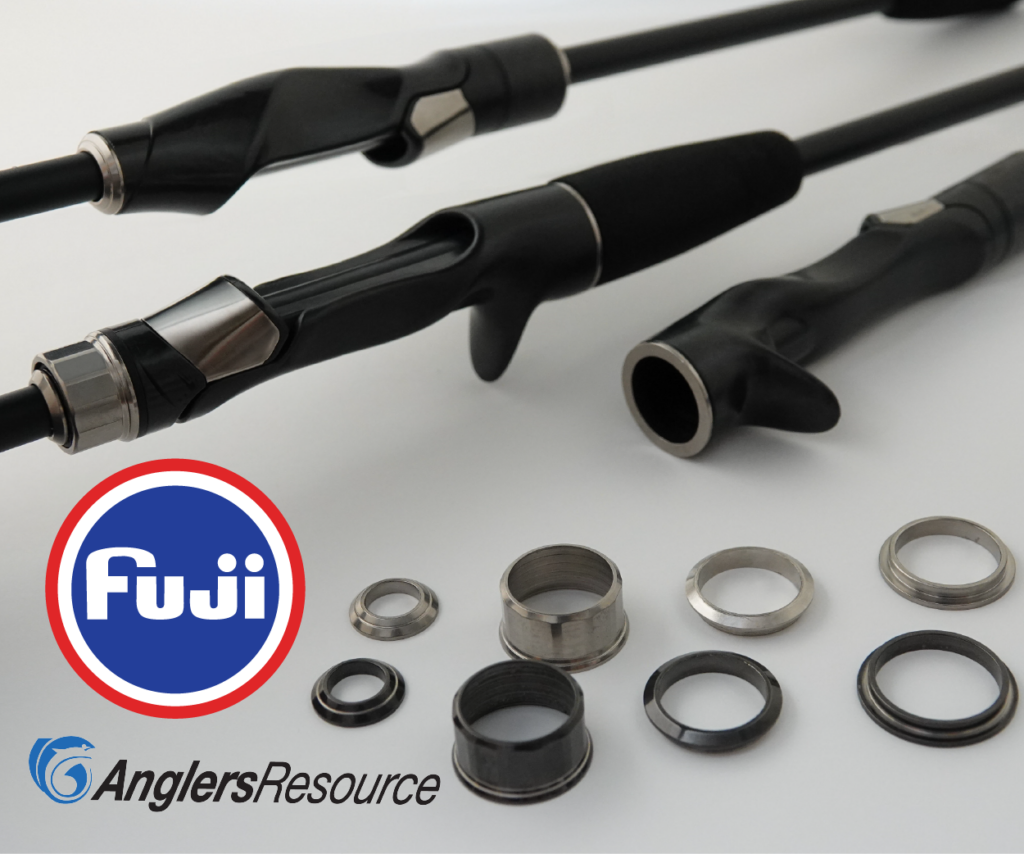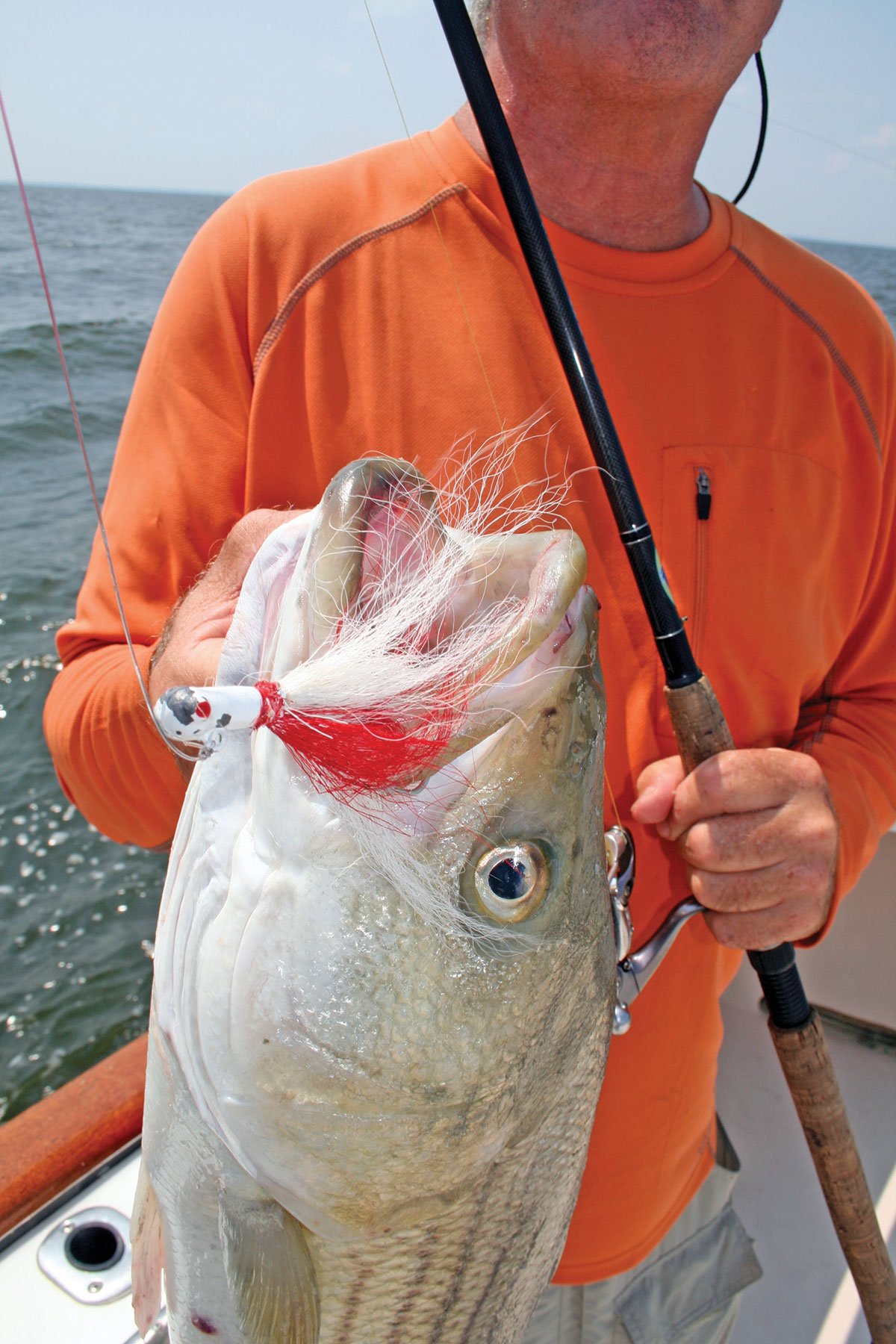
Is this the year that the rips turn on again for Delaware Bay striper fishermen?
There was a time when the Cape May Rips provided good, and most importantly, consistent fishing for fall-run striped bass. Sadly, this hasn’t really occurred since Superstorm Sandy. Don’t ask me why, but that storm did something to the striper fishing from Delaware to Virginia. No more action at the Rips, Indian River Inlet or off of Ocean City or Virginia Beach.
Last year we did see some improvement with a few nice stripers caught at the Rips and out of Indian River Inlet. This year we have seen more bunker along the beach than ever before and the Delaware Bay is also full of bunker and will soon be loaded with mullet. It is my hope that this concentration of bait will draw in a good fall run of stripers to the Cape May Rips.
Spot Burn
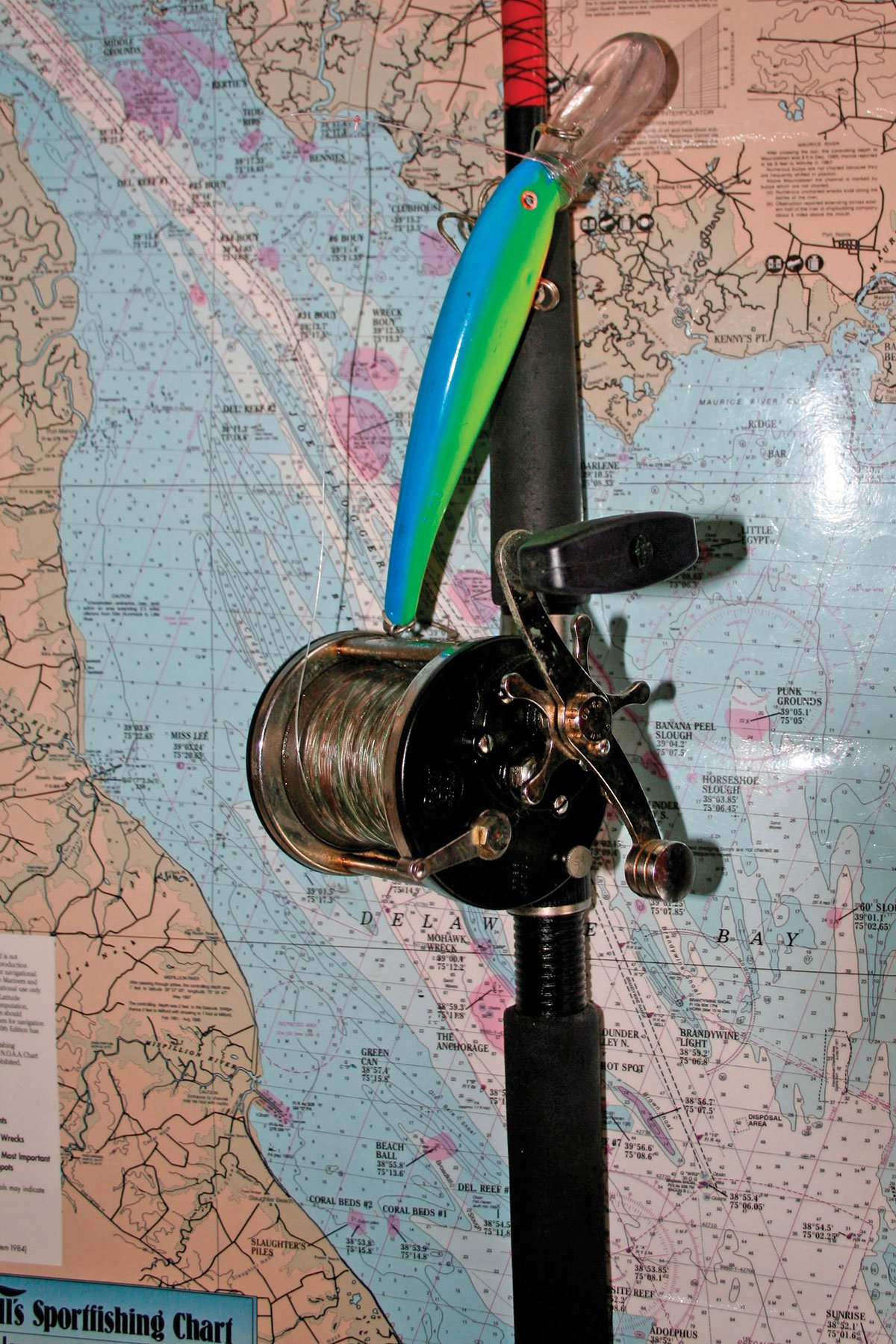
The Cape May Rips essentially run from Cape May to Cape Henlopen and were, at one time, a danger to all boats trying to enter Delaware Bay. Today there are plainly marked channels and experienced river pilots to take huge tankers and container ships through the shoals.
To recreational fishermen these shoals make up some of the best fishing structure along the east coast. The water pouring in and out of Delaware Bay has created shoals that tumble and toss baitfish much to the delight of stripers and other gamefish.
When the current is running full bore on a full moon tide with an opposing wind the standing waves can be quite impressive. This is also a very good time to fish so proper boat handling is a requirement in this environment.
There are several techniques used to fish this area. Trolling with spoons and plugs is popular and can be done two ways. The first is to run the boat parallel to the standing waves and allow the current to pull the plug or spoon over the shoal to the feeding fish. The second is to hold the boat into the current while allowing the plug or spoon to fall back over the shoal. This can cause a problem if there are a lot of boats trolling the area as your lines will be in their path. But who said fishing should be without conflict?
As for trolling tackle I use Penn 113H reels filled with 30-pound Hi Seas mono line. These are mounted on custom rods built by my former brother-in-law, Bobby Woods, back in another day and time. My trolling lures will be Mann’s Stretch 25s or 30s, Hunting Drone 4-1/2 spoons, Crippled Alewives or 3- to 6-ounce bucktails. Colors range from white to chartreuse to red and purple.
Personally, I have not had the opportunity to try Maja bunker spoons, but I am certain they would work here. Since their lures work best when swimming back and forth behind the boat, the captain would have to be careful when working in crowded conditions.
Popular locations like the Eights and Prissy Wicks can be covered up with boats when the bite is hot. I don’t care much for contact fishing and will go off and try to find my own fish away from the madding crowd. Sometimes this quest is successful and sometimes I have to return to the madding crowd.
Snakes & Bucktails
Drifting with live eels is another technique that will catch stripers at the Rips. If you have ever fished with live eels you know they do not enjoy the experience. I keep mine as cold as possible in a special cooler where they do not come in contact with the freshwater or ice. When I take one out of the cooler, I use a dry rag and have a circle hook ready. The hook goes in the lower jaw and out the upper jaw or the eye. And the eel goes in the water right away. Do not allow the eel to rest or it will knot itself up into a ball taking your leader and line with it. Once the eel is in the water the current should be enough to keep the eel swimming straight.
The problem with live eels is they attract spiny dog sharks. In my experience these critters don’t pose much of a problem when the current is running hard, but as soon as it slows, they are all over your eels. The only solution is to pick up and start trolling.
I am old school (Let’s face it, I am just old.) I still rely on my Captain Segull’s Sportfishing Charts. I use them when planning a trip and like to pick out good looking bottom structure then add the location into my GPS (see numbers below from Segull’s Chart #DEL117). For instance, there are some very nice fingers on the southeast side of Overfalls Shoal that vary in depth from 33 to 22 and back to 33 feet. I have worked these before with good results. While having this location in my GPS is nice, I do realize that the bottom is made of sand and the strong current running in and out of Delaware Bay just may change the location of these shoals. This is why I don’t get upset if the bottom structure is not exactly where I thought it would be. I simply move my operation to conform to the new location. – E. Burnley
The Eights N38 50.000 / W75 02.050
Prissy Wicks N38 54.350 / W74 57.150
Overfalls Shoal N38 51.951 / W74 59.319
The Valley is a deep hole between the Eights and the beginning of Overfalls Shoal. The bottom drops to over 90 feet then comes up to 70 feet before rising back to 20 feet at the shoal. This is a good location to drift eels or jig with big bucktails. It doesn’t get a lot of pressure so I will work here on my way to the more popular locations.
Another less popular spot is a rip that makes up at the Outer Wall. This is only good on incoming water and forms about 300 yards from the north end of the wall. The best way to fish this rip is by jigging with bucktails or metal lures such as Stingsilvers or Crippled Herrings. I have also caught stripers here using wire line and parachute bucktails. This is a bit of hard work since you must keep jigging the rod to put action into the parachute rig, but at times this can be very effective.
Fishing the Cape May Rips is a short run from either Cape May, New Jersey, Lewes or Indian River, Delaware. The weather in the fall and early winter can make this short run seem very long and on days when the wind howls out of the north or south, wise captains stay at the dock. Delaware does have a fishing license that is required in both fresh and saltwater (www.dnrec.delaware.gov/fw/Fisheries), whereas New Jersey has a free saltwater registry (saltwaterregistry.nj.gov). Whatever port you hail from, if you’re fishing overlapping waters you’ll need both.
Everyone who follows the troubles of striped bass knows there are not as many big fish as we would like and 2020 is going to see some major restrictions on the recreational catch I would hope we would strongly consider catch and release this fall since the big fish we may catch hold the future of the fishery in their bellies.

